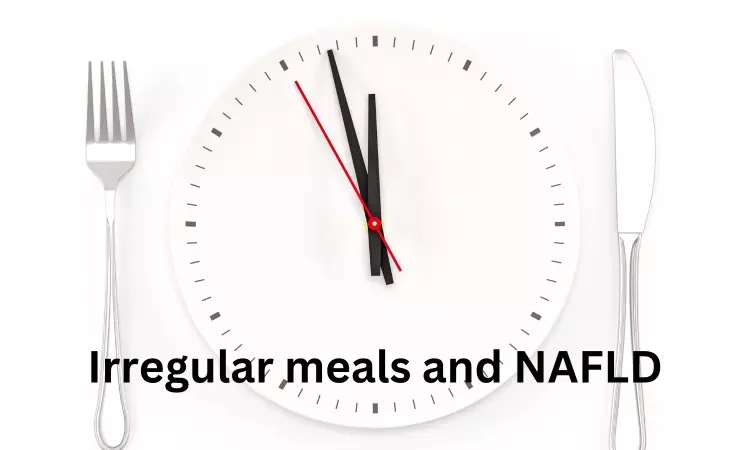- Home
- Medical news & Guidelines
- Anesthesiology
- Cardiology and CTVS
- Critical Care
- Dentistry
- Dermatology
- Diabetes and Endocrinology
- ENT
- Gastroenterology
- Medicine
- Nephrology
- Neurology
- Obstretics-Gynaecology
- Oncology
- Ophthalmology
- Orthopaedics
- Pediatrics-Neonatology
- Psychiatry
- Pulmonology
- Radiology
- Surgery
- Urology
- Laboratory Medicine
- Diet
- Nursing
- Paramedical
- Physiotherapy
- Health news
- Fact Check
- Bone Health Fact Check
- Brain Health Fact Check
- Cancer Related Fact Check
- Child Care Fact Check
- Dental and oral health fact check
- Diabetes and metabolic health fact check
- Diet and Nutrition Fact Check
- Eye and ENT Care Fact Check
- Fitness fact check
- Gut health fact check
- Heart health fact check
- Kidney health fact check
- Medical education fact check
- Men's health fact check
- Respiratory fact check
- Skin and hair care fact check
- Vaccine and Immunization fact check
- Women's health fact check
- AYUSH
- State News
- Andaman and Nicobar Islands
- Andhra Pradesh
- Arunachal Pradesh
- Assam
- Bihar
- Chandigarh
- Chattisgarh
- Dadra and Nagar Haveli
- Daman and Diu
- Delhi
- Goa
- Gujarat
- Haryana
- Himachal Pradesh
- Jammu & Kashmir
- Jharkhand
- Karnataka
- Kerala
- Ladakh
- Lakshadweep
- Madhya Pradesh
- Maharashtra
- Manipur
- Meghalaya
- Mizoram
- Nagaland
- Odisha
- Puducherry
- Punjab
- Rajasthan
- Sikkim
- Tamil Nadu
- Telangana
- Tripura
- Uttar Pradesh
- Uttrakhand
- West Bengal
- Medical Education
- Industry
Time Restricted eating promising strategy to manage NAFLD

Changing lifestyle and habits are a root cause of so many diseases one among them is Nonalcoholic fatty liver disease (NAFLD). It is characterized by fat builds up in the liver. Nonalcoholic fatty liver (NAFL) and nonalcoholic steatohepatitis (NASH) are types of NAFLD. NASH, is known to cause inflammation and liver damage, along with fat in the liver.
Food intake is an extremely powerful external timing cue. The current review in the journal Gut summarises the available observational and epidemiological data describing associations between eating patterns and metabolic disease, including the negative effects of irregular meal patterns, skipping breakfast and night-time eating on liver health.
They suggest that these harmful behaviours deserve greater consideration in the risk stratification and management of patients with NAFLD particularly in a 24-hour society with continuous availability of food and with up to 20% of the population now engaged in shiftwork with mistimed eating patterns.
The review points out key points such as
• The irregular meal patterns, skipping breakfast and night-time eating are associated with an increased risk of non-alcoholic fatty liver disease (NAFLD) and related metabolic conditions.
• Distribution of total daily energy intake away from the end of the day may improve metabolic health.
• Complete fasting between dawn and dusk during Ramadan is associated with weight loss, reduced insulin resistance and improved liver biochemistry.
• Intermittent fasting protocols can lead to>5% wt loss, reduced hepatic steatosis and improved lipid profiles in patients with NAFLD and appear superior to standard dietary and weight loss advice.
• Compared with continuous energy restriction, time-restricted eating (TRE) leads to similar reductions in body weight and intra-hepatic triglyceride but may be better tolerated and is associated with greater improvements in glycaemic control.
• TRE can reprogramme circadian outputs across multiple tissues leading to synchronisation of behaviour and physiology across a 24-hour cycle.
• TRE has emerged as a promising strategy to mitigate the adverse metabolic phenotype associated with circadian misalignment induced by night-shift working.
In conclusion, Temporal eating patterns, liver homeostasis, circadian clock function and metabolic health are all intrinsically linked. TRE may facilitate incremental benefits beyond fasting by resynchronising circadian rhythms across multiple metabolically active tissues involved in the pathogenesis of NAFLD. As a result, TRE has been shown in clinical trials to be a safe and effective way to reduce steatosis and improve multiple domains of the metabolic syndrome.
Reference: Marjot T, Tomlinson JW, Hodson L, et al Timing of energy intake and the therapeutic potential of intermittent fasting and time-restricted eating in NAFLD; b Gut 2023;72:1607-1619.
MSc. Neuroscience
Niveditha Subramani a MSc. Neuroscience (Faculty of Medicine) graduate from University of Madras, Chennai. Ambitious in Neuro research having worked in motor diseases and neuron apoptosis is interested in more of new upcoming research and their advancement in field of medicine. She has an engrossed skill towards writing and her roles at Medical dialogue include Sr. Content writer. Her news covers new discoveries and updates in field of medicine. She can be reached at editorial@medicaldialogues.in
Dr Kamal Kant Kohli-MBBS, DTCD- a chest specialist with more than 30 years of practice and a flair for writing clinical articles, Dr Kamal Kant Kohli joined Medical Dialogues as a Chief Editor of Medical News. Besides writing articles, as an editor, he proofreads and verifies all the medical content published on Medical Dialogues including those coming from journals, studies,medical conferences,guidelines etc. Email: drkohli@medicaldialogues.in. Contact no. 011-43720751


